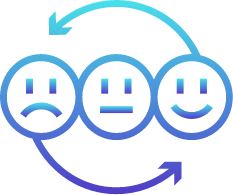Top 8 Metrics to Gauge Talent Pipeline Efficacy
- RASpert
- Nov 1, 2021
- 4 min read
Updated: Sep 20, 2024

As a recruiter, you of course want to make sure that you hire the best talent for your organization. However, the fluctuating nature of the IT landscape as well as client requirements presents a massive roadblock to this goal. A last minute scramble to fill in the talent gap can lead to hiring of an unsuitable candidate, which is not ideal for either organization or employee. This makes having a talent pipeline an integral part of the hiring process.
What is a talent pipeline?
A talent pipeline is nothing but a pool of potential candidates who are ready and fully qualified to fill in relevant positions as soon as there is a vacancy.
Thus, you have no need of organizing a frantic manhunt after new requirements present themselves. You can simply take the best pick of possible candidates in your vicinity. This not only improves the quality of your hire, but also significantly reduces the time, efforts, and costs involved in an average hiring process. After all, well begun is half done, isn’t it?
But, is only having a talent pipeline enough? How do you know that your pool is really providing you with the best possible talent? The answer lies in talent metrics - certain measurements that can help you monitor and analyze the success of your hiring process. Based on the results, you can make informed decisions to optimize the process and get maximized returns on your candidate investment.
Let us have a quick look at the top talent pipeline metrics you should be tracking.
Time to fill
As the name suggests, time to fill represents the number of calendar days between the day a job requisition is approved and the day a relevant candidate accepts the job offer. It essentially tells you the speediness of your hiring process, and shows how long it typically takes for you to replace a departed employee.
A lower time to fill not only points to a more efficient recruitment department, but also ensures that the rest of the employees in the departed worker’s team do not have to bear extra workload for too long.
Time to hire
This metric is often confused or used interchangeably with time to fill, but there is a substantial difference between the two. Instead of starting from the moment a job requisition is approved, time to hire starts from the time a candidate actually applies for a job and ends at the time he/she accepts the job offer.
The candidate-centered metric indicates how they are experiencing the recruitment process. Most candidates tend to lose interest if a recruiter takes too long to respond, and naturally gravitate towards a company with a shorter time to hire. Focusing on reducing your time to hire will prevent a good candidate from being lost to another company.
Source of hire
This is one of the most useful and popular talent pipeline metrics that helps you pinpoint the most effective recruitment channel for your organization. From job portals and company websites to social media, recruiters are bombarded with applications from numerous channels. Source to hire will help you filter and focus on the channels that have provided you with better candidates than the rest.
First-year attrition
A key metric that is a strong indicator of hiring success, first-year attrition can either be managed or unmanaged. Managed attrition is where a contract is terminated by the employer before an entire year is completed, whereas unmanaged attrition is where the employee leaves on his/her own accord. While the former is mostly likely a result of unsatisfactory performance, the latter could indicate a discrepancy between the expectations of both employer and employee. Regardless, a high first-year attrition affects the company negatively in terms of both productivity and cost.
Quality of hire
Quality of hire is often based on the performance ratings of the candidates acquired within the first year of their tenure. Naturally, higher ratings indicate greater hiring success, while lower ratings point to bad hires. The latter can cost the company thousands of dollars in direct and indirect costs. Quality of hire can be considered along with source of hire to root out and reduce the number of bad hires.
Hiring Manager satisfaction
Of course, one of the greatest measures of hiring success is how satisfied the hiring manager is with the new candidates. Such candidates are also more likely to perform better and fit cohesively in the team structure, greatly increasing their chances of being considered a successful hire.
Candidate job satisfaction
This is one of the best measures of determining whether the expectations that were set during the recruitment process are on par with the real work scenario. A lower score could indicate either mismanagement in job expectations or incomplete job descriptions.
An effective way to battle low candidate job satisfaction is providing a realistic job preview (RJP) while calling for applicants. An RJP highlights both the positive and negative aspects of the job, making it easier for candidates to judge their suitability for the position.
Applicants per opening
A good marker for the job’s popularity, a large number of applicants per opening is not always desirable. While it can simply mean that the demand for that particular role is high in your area, it can also mean that your job description is too broad and is attracting irrelevant candidates.
Being a bit more stringent in your criteria can help you narrow down the number of applications, without hampering the suitability of the candidates.




















